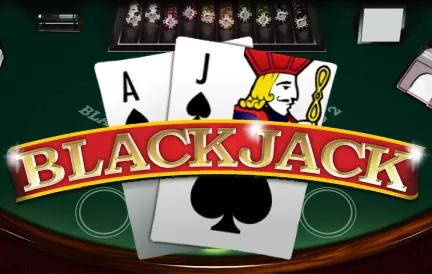How to Play Craps at Online Casino
May 26th, 2025
24029
Learning how to play craps at online casino platforms offers a uniquely accessible entry point into this classic game of chance. Online versions typically replicate the excitement of a physical casino, complete with detailed table layouts and intuitive betting interfaces, allowing new players to familiarize themselves with the rules and flow at their own pace. Furthermore, many online casinos provide free play modes, an invaluable tool for practicing how to play craps strategies without any financial commitment, making it an ideal starting ground before venturing into real money play or a live casino environment.
What Is Craps?
Among casino offerings, Craps stands out as a particularly vibrant and communal dice game; mastering how to play craps can introduce you to an exciting new dimension of gaming. Fundamentally, it’s a game where participants wager on the results of a pair of dice thrown by a designated player, the "shooter." Although the table’s appearance might seem complex initially, grasping the core elements of how to play craps game is more straightforward than it appears. Regardless of whether you're investigating how to play craps at casino locations or delving into how to play craps online, the essential concepts are consistent.
The Craps Table Layout
The initial move in learning how to play craps table involves familiarizing yourself with its design. It's a lengthy table, frequently featuring high sides, with identical layouts on each end to accommodate players standing around it. Each side functions as an independent gaming zone managed by dealers, with a "boxman" positioned centrally to supervise the game and a "stickman" to announce the game's progress and manage the dice.
Key Sections of the Table
- Pass Line, Don’t Pass Line: These are arguably the most pivotal zones. The Pass Line is the typical starting point for novices, betting in alignment with the shooter. Conversely, the Don’t Pass Line is for wagers against the shooter. Comprehending how to play the pass line in craps is essential.
- Come and Don’t Come: These sections operate in a manner akin to the Pass and Don’t Pass lines, but wagers are made after a "point" has been determined (a concept explained later).
- Proposition Bets and Field: The table's center is populated with "Proposition Bets." These are generally single-roll wagers on particular dice outcomes (like rolling a 12, or "boxcars"). The Field is an expansive area for a single-roll bet that certain numbers (2, 3, 4, 9, 10, 11, or 12) will appear.
Navigating these primary betting areas effectively is crucial for both new and experienced players. The Pass and Don't Pass lines represent the foundational bets around which much of the game's action revolves, dictating wins or losses on the come-out roll and after a point is established. Understanding the function of the Come, Don't Come, Field, and the various Proposition Bets allows for a more diversified and strategic approach to wagering, though beginners are often advised to start with the simpler options.
Understanding the Terminology
Prior to exploring the rules, let's review some fundamental vocabulary you'll encounter, which is vital for anyone learning how to play craps for beginners:
- Shooter: The individual responsible for rolling the dice.
- Come-Out Roll: The inaugural dice roll in a betting sequence, or the first roll following the resolution of a previous point or a "seven-out."
- Point: If the come-out roll results in a 4, 5, 6, 8, 9, or 10, that specific number becomes the "point."
- Seven-Out: This occurs when the shooter rolls a 7 after a point has been set, causing Pass Line bets to lose and the dice to move to a new shooter.
- Craps (Numbers): The act of rolling a 2, 3, or 12 during the come-out roll.
Basic Rules of Craps
Grasping the game's progression is crucial if your goal is to learn how to play craps for dummies or simply achieve a solid understanding as a beginner. The game unfolds through a sequence of dice throws, with bets settled according to specific results, especially the inopportune appearance of a 7. Internalizing these central mechanics is vital before venturing into more intricate betting approaches.
The Come-Out Roll
The game commences with the come-out roll. The shooter makes a wager on either the Pass Line or the Don't Pass Line. Other participants may also place these bets.
- What Happens on 7, 11, 2, 3, or 12:
- Should the shooter roll a 7 or 11 (a "natural"), Pass Line wagers win instantly. Don't Pass Line wagers lose. The betting round concludes, and the shooter initiates another come-out roll.
- If the shooter rolls a 2, 3, or 12 (known as "craps" numbers), Pass Line wagers lose. Don't Pass Line wagers win if a 2 or 3 is rolled. If a 12 is rolled (or sometimes a 2, depending on casino rules), Don't Pass bets result in a "push," meaning no party wins or loses – the stake is returned. The round concludes, and the shooter performs another come-out roll (unless a "seven-out" happens later).
Establishing the Point
If the come-out roll yields a 4, 5, 6, 8, 9, or 10, this number is designated as the "point." The dealer will then place an "ON" marker (puck) on the corresponding number on the table’s layout. This indicated number now serves as the target for the shooter to achieve again before rolling a 7, thereby shaping the subsequent phase of the game for those who bet on the Pass Line.
Rolling for the Point
After a point is determined, the shooter continues to throw the dice.
- How the Game Progresses After the Point is Set:
- The objective for Pass Line bettors is for the shooter to roll the established point number once more prior to rolling a 7.
- The objective for Don't Pass bettors is for the shooter to roll a 7 prior to rolling the established point number again.
Winning and Losing Conditions
- If the shooter rolls the point number again before rolling a 7: Pass Line bets are successful. Don't Pass Line bets are unsuccessful. The "ON" puck is flipped to "OFF," and the shooter begins a new come-out roll.
- If the shooter rolls a 7 before rolling the point number (a "seven-out"): Pass Line bets are unsuccessful. Don't Pass Line bets are successful. The dice are passed to the subsequent player, who becomes the new shooter.
This progression is fundamental to understanding how to play casino craps. Anticipation mounts with every roll after the point is fixed, as all participants watch intently to see if the point or a 7 will emerge first. These outcomes decide the fate of the most basic wagers on the table, determining if you're collecting winnings or bracing for the next shooter. Keep in mind, a 7 is favorable on the come-out roll for Pass Line bettors, but it becomes the ominous number once a point is in play.
Expert Tip: Learn the basic bets first, like Pass Line and Don't Pass, before exploring complex wagers.
Main Types of Bets in Craps
While numerous wagers exist on the table, novices should concentrate on a select few. This is where insight into how to play craps and win (or at least reduce losses) begins. Apart from the elementary Pass and Don't Pass, investigating alternative wagers like Come bets or Place bets can inject more excitement, but it's prudent to first comprehend their respective odds. The assortment of bets accommodates varied risk tolerances, from cautious to more daring.
Pass Line Bet
As previously mentioned, you are wagering in concert with the shooter. It wins if a 7 or 11 appears on the come-out roll; it loses on a 2, 3, or 12. If a point is set, the bet wins if that point is rolled again before a 7. This is the most prevalent wager for learning how to play craps at the casino.
Don’t Pass Bet
This is the inverse of the Pass Line bet. You are wagering against the shooter. It wins if the come-out roll is a 2 or 3 (it pushes on a 12, occasionally a 2); it loses on a 7 or 11. If a point is set, it wins if a 7 is rolled before the point.
Come and Don’t Come Bets
These function as miniature Pass/Don't Pass wagers made following the establishment of a point.
- Come Bet: Placed in the "Come" section. The subsequent dice roll serves as a come-out roll for this specific wager. If it's a 7 or 11, the Come bet wins. If it's a 2, 3, or 12, it loses. If any other number (4, 5, 6, 8, 9, 10) is rolled, that number becomes the "Come point," and your wager is moved to that number. Your Come bet then succeeds if that Come point is rolled again before a 7.
- Don't Come Bet: Operates conversely to the Come bet, in a manner similar to a Don't Pass bet.
Odds Bets (Behind the Line)
Once a point is determined for a Pass Line or Come bet, you have the option to make an "Odds Bet" by placing extra chips behind your initial wager. This represents one of the most advantageous bets in the casino because it pays out at true odds and carries no house advantage. Learning to utilize odds is vital for anyone seriously engaging with how to play craps. The same principle is applicable to Don't Pass/Don't Come bets (referred to as "laying odds").
Place Bets and Buy Bets
- Place Bets: You wager on a particular number (4, 5, 6, 8, 9, or 10) being rolled before a 7. These can be initiated at any juncture after the come-out roll if no point is active, or at any time if a point is active.
- Buy Bets: Similar to Place bets, but you incur a 5% commission ("vig") to receive true odds if the number appears. This is generally more favorable for the numbers 4 and 10.
These types of wagers permit players to bet on individual numbers, separate from the primary Pass Line activity. Discerning when a Place bet might offer a greater advantage than a Buy bet (or the reverse) develops with increased experience and a better understanding of the payout structures.
Field Bets and Proposition Bets
- Field Bets: A single-roll wager that the upcoming roll will result in a 2, 3, 4, 9, 10, 11, or 12. The numbers 2 and 12 often yield double or triple payouts.
- Proposition Bets: Wagers located in the table's center on specific results of the next roll (e.g., "Any Craps" – 2, 3, or 12; "Hardways" – rolling a 4, 6, 8, or 10 as identical dice pairs like 3-3 before a 7 or an "easy" variant of the number appears). These typically possess a substantial house edge and are not advised for beginners.
While presenting the temptation of rapid victories and larger returns, these wagers usually entail a higher degree of risk. Field bets are straightforward single-roll wagers, whereas proposition bets, situated in the table's center, frequently feature some of the least favorable odds for the player. Numerous seasoned participants entirely bypass proposition bets due to their disadvantageous house edge, opting instead to concentrate on wagers with superior statistical probabilities.
How to Place a Bet in Craps
Knowing how to play craps at casino settings includes understanding the proper betting procedures and the physical act of making your wagers. You will need to communicate with dealers to place many types of bets, so unambiguous interaction is vital. Bear in mind that certain bets you can make yourself, while others necessitate dealer involvement.
Step-by-Step Guide for Beginners
- Acquire Chips: Convert cash into chips at the craps table games when the dice are positioned in the center of the table (not while a shooter is preparing to roll).
- Choose the Right Moment: Make bets such as Pass Line or Field bets yourself when the puck indicates "OFF" (prior to a come-out roll) or between dice rolls.
- Making Simple Wagers: For a Pass Line bet, position your chips directly onto the Pass Line area in front of your spot.
- Dealer Involvement: For most alternative wagers (Come, Place, Odds, Proposition bets), you will give your chips to the dealer and specify the bet you wish to make. For instance, "Place the 6" or "Odds on my Pass Line bet."
Approaching the table with assurance, even as a newcomer, begins with comprehending these fundamental actions. Feel free to observe for a short period if you feel uncertain, and recall that dealers are generally quite willing to assist new players. Adhering to this simple procedure will significantly facilitate your initial experience.
Minimum and Maximum Bet Limits
The table will display a sign indicating the lowest and highest permissible bets for different wagers. This information is crucial for effective bankroll management. These restrictions pertain to initial wagers as well as any odds or supplementary bets you might choose to add, so remain conscious of them before you commit your chips.
Using Chips and Interacting with the Dealer (Live Games)
- Maintain clarity and brevity when stating your bets.
- Avoid tossing chips erratically; either place them neatly or hand them to the dealer.
- Dealers are present to assist, particularly if you are learning how to play craps for beginners. Do not hesitate to pose questions (though do so at a time that doesn't disrupt the game's momentum).
- It is a common courtesy to tip dealers if you are winning or generally enjoying the experience.
Observing proper table manners ensures the game proceeds without a hitch and that your wagers are accurately understood and executed. When you provide chips to the dealer, clearly articulate your bet and the specific number if relevant; for example, "Twenty-five dollars on the Hard 8." This practice helps prevent misunderstandings and contributes to an enjoyable game for all participants.
Smart Tip: Online craps often uses random number generators (RNG) to ensure fair rolls.
How to Play Craps at Online Casino
Engaging in how to play craps online provides convenience and an excellent opportunity to learn the game's intricacies without the direct scrutiny of a live casino environment. The majority of online casinos present a digital craps table that replicates the layout of a physical one, enabling you to click and position your bets with ease. You will generally find choices for both RNG (Random Number Generator) craps and Live Dealer craps, with each offering a distinct mode of play. Numerous platforms also furnish useful tutorials or a cheat sheet how to play craps to support new participants.
Tips for Playing Craps
Here are several suggestions to improve your gaming experience, especially if your aim is understanding how to play craps and win (or at least to play more astutely). Although no single strategy can guarantee victory in a game of chance, these recommendations can assist you in managing your funds and deriving more pleasure from the casino games. Intelligent play involves comprehending probabilities and making well-informed choices rather than attempting to recoup losses.
Start with Simple Bets (Pass Line, Odds)
Adhere to the Pass Line bet and invariably supplement it with an Odds bet once a point has been determined. This particular combination presents one of the most favorable house edges available in the casino. By concentrating on these elementary wagers, you streamline the game, diminish the casino's inherent advantage, and establish a strong basis for learning. This method is strongly advised for anyone commencing their journey with how to play craps game.
Avoid High House Edge Bets (e.g., Hardways, Big 6/8)
Proposition bets situated in the table's center might appear attractive due to their higher potential payouts, but they are accompanied by a considerably larger house edge. It is advisable for beginners to avoid these. The "Big 6" and "Big 8" wagers are notably disadvantageous, as Place bets on 6 and 8 offer better returns for the identical outcome.
Learn the Flow of the Game Before Betting Heavily
Observe a few rounds of play. Develop a feel for the game's rhythm and the dealer's calls. This is sound counsel whether you are learning how to play craps at the casino or how to play craps online. Watching seasoned players and how dealers conduct the game can offer valuable understanding of betting tendencies and table customs. Refrain from rushing into substantial bets until you are at ease with the potential speed at which the game can shift.
Bankroll Management Is Key
Determine the amount you are prepared to potentially lose before you begin playing and strictly adhere to that limit. Craps can be a very fast-moving game, and it is easy to become swept up in the prevailing excitement. Establish unambiguous win objectives and loss thresholds for every session to guarantee you are playing in a responsible manner and not wagering more than you can comfortably afford. Such discipline is vital for sustained enjoyment of any casino pursuit.
Playing Craps Online vs. in a Casino
There are options for how to play craps at home through online casinos, and even for engaging with how to play craps machine versions in some physical casino locations. The choice often comes down to personal preference, balancing the desire for social interaction with the convenience and learning opportunities offered by digital platforms. Each environment presents unique advantages for different types of players.
Digital platforms frequently offer comprehensive game histories and statistical data not easily accessible in a live setting, which can prove advantageous for players with an analytical approach. Conversely, the live casino provides an unparalleled ambiance of fellowship and thrill, complete with the vocal reactions of fellow participants. The choice between these options hinges on your preferences regarding pace, social engagement, and overall convenience. Many find that starting online helps build confidence before they experience the dynamic atmosphere of a land-based casino's craps table.
Differences in Speed and Interface
- Online: Typically proceeds at a quicker pace as there's no delay for dice retrieval or manual payout processing. The interface is graphical, and bets are placed via clicks. This environment can be conducive to rapidly learning the rules.
- Casino: Offers a more social and energetic atmosphere but is also slower. The physical sensation of handling chips and dice is a significant attraction for many players.
The digital interface of online craps often includes helpful features like clearly displayed odds for different bets and automated calculations of winnings, which can be particularly beneficial for beginners still learning the payouts. In contrast, the interface at a physical casino is the table itself, relying on dealer interactions and sometimes requiring players to actively track their own bets and potential winnings more closely. This direct engagement can be part of the appeal for some, while others might prefer the streamlined nature of online play.
Top Tip: Set a budget and stick to it—craps can be fast-paced and tempting to overspend.
Live Dealer Craps vs. RNG Craps
- Live Dealer Craps (Online): A human dealer throws the dice in a studio setting, and the game is broadcast to you via stream. This setup emulates the social dynamics of how to play casino craps.
- RNG Craps (Online/Machine): A Random Number Generator dictates the dice roll outcome. This is the technology underpinning most how to play craps machine games and standard digital craps offerings.
Live Dealer craps versions often incorporate a chat feature, facilitating communication with the dealer and other players, thereby narrowing the gap between digital play and the tangible casino atmosphere. RNG craps, in contrast, delivers a more solitary and frequently quicker game, well-suited for concentrated practice or brief gaming sessions. Both formats adhere to the established rules of craps, ensuring a Bпрактичный and equitable gaming experience.
Practice for Free Before Playing for Real Money
The majority of online casinos provide a "play for free" or demo mode option. This serves as an outstanding method for individuals learning how to play craps for dummies or for beginners to rehearse without the risk of actual financial loss. It is an ideal way to become comfortable with the various bets and the overall progression of how to play craps game. You might even utilize a cheat sheet how to play craps in conjunction to reinforce your comprehension.
Frequently Asked Questions About Playing Craps
Is craps hard to learn for beginners?
The game can appear daunting due to the bustling table and the multitude of betting choices. Nevertheless, the fundamental rules, particularly those concerning how to play the pass line in craps, are relatively uncomplicated. By concentrating on the basics initially, you will discover that learning how to play craps for beginners is quite feasible.
What’s the best bet for new players?
The Pass Line bet, subsequently augmented by taking full Odds once a point has been established, is highly recommended. This particular combination presents a very minimal house edge.
Can you control the dice in craps?
No. Although some players may attempt "dice setting" or "controlled shooting" techniques, the casino setting (with its bouncy table surface and the requirement to hit the back wall) is engineered to guarantee random roll outcomes. For all practical intents and purposes, the result is determined by chance.
What’s the house edge on basic bets?
- Pass Line/Come Bet: Approximately 1.41%.
- Don't Pass/Don't Come Bet: Approximately 1.36%.
- Odds Bets: 0% house edge (as they pay out at true odds).
- Many Proposition bets can carry a house edge of 10% or considerably more.
Related posts











